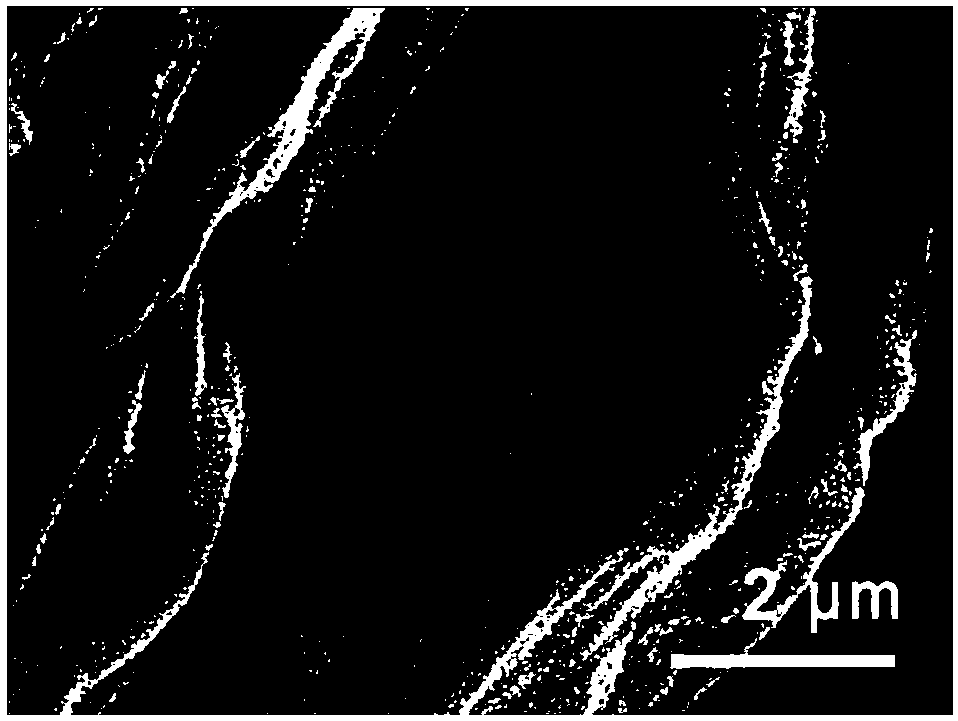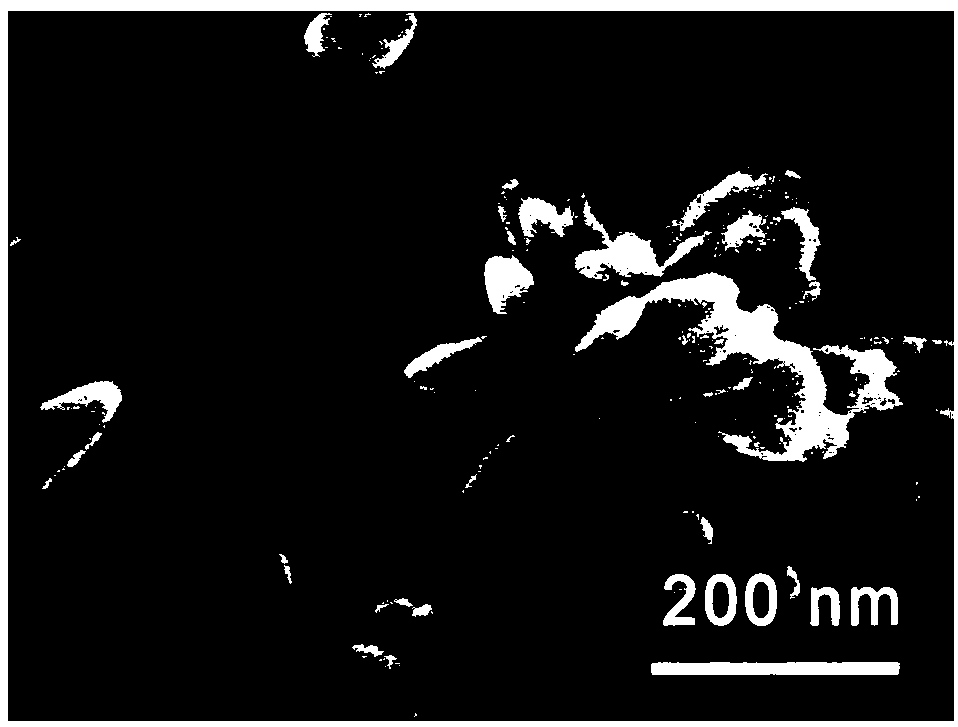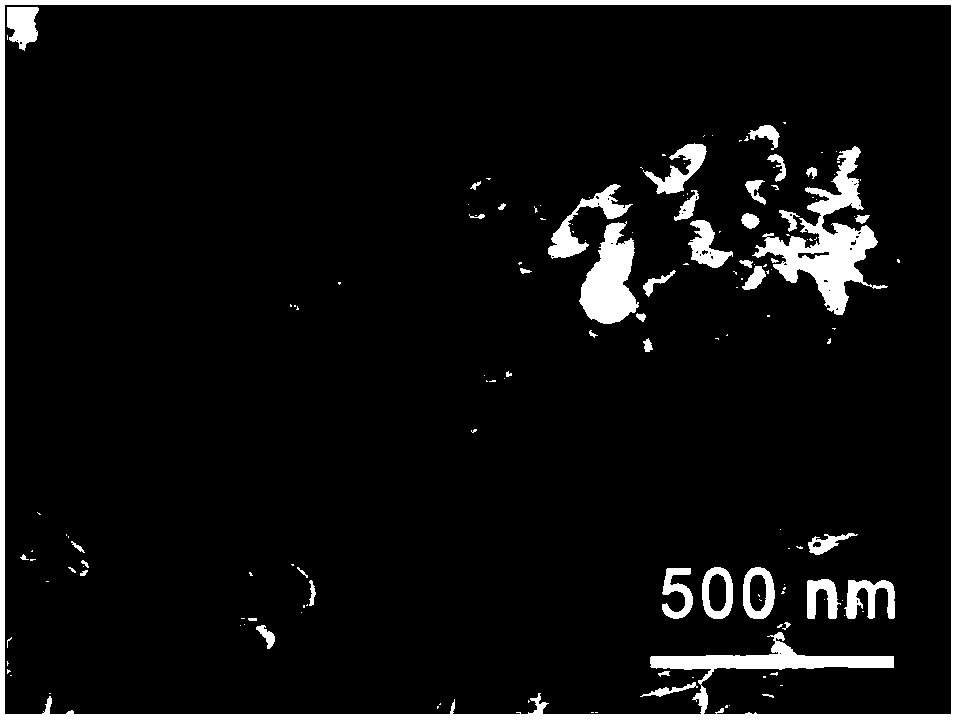Method for preparing N-doped nano flower-shaped TiO2 photocatalysis material by taking carbonized lotus leaf as substrate
A photocatalytic material and a technology of carbonizing lotus leaves, which are applied in the field of photocatalysis, can solve the problems of complex preparation methods of catalysts, weak combination of catalyst layer and carrier, unfavorable large-scale production, etc., and achieve good use value and application prospects. The production cost is low and the effect of reducing secondary pollution
- Summary
- Abstract
- Description
- Claims
- Application Information
AI Technical Summary
Problems solved by technology
Method used
Image
Examples
Embodiment
[0035] a) Place the collected fresh lotus leaves at room temperature for 24 hours to dry naturally, then put them into a tube furnace, and under the protection of argon, raise the temperature to 600°C at a heating rate of 2°C / min, and keep it warm for 24 hours for carbonization , to obtain carbonized lotus leaf;
[0036] b) Disperse 1 g of carbonized lotus leaves in 100 ml of absolute ethanol (about 79 g), ultrasonically pulverize for 1 hour and continue stirring for 1 hour to obtain a suspension of carbonized lotus leaves; then slowly add 0.75 ml of tetrabutyl titanate dropwise to the suspension Ester (C 16 h 36 o 4 Ti), the mixed solution obtained after the dropwise addition was completed and stirred at room temperature for 24 hours, so that n-butyl titanate was supported on the carbonized lotus leaf, filtered, and the separated solid product was put into a tube furnace, and under the protection of argon, the Calcined at 450°C for 2 hours to obtain TiO-loaded 2 Carbonize...
PUM
 Login to View More
Login to View More Abstract
Description
Claims
Application Information
 Login to View More
Login to View More - R&D
- Intellectual Property
- Life Sciences
- Materials
- Tech Scout
- Unparalleled Data Quality
- Higher Quality Content
- 60% Fewer Hallucinations
Browse by: Latest US Patents, China's latest patents, Technical Efficacy Thesaurus, Application Domain, Technology Topic, Popular Technical Reports.
© 2025 PatSnap. All rights reserved.Legal|Privacy policy|Modern Slavery Act Transparency Statement|Sitemap|About US| Contact US: help@patsnap.com



